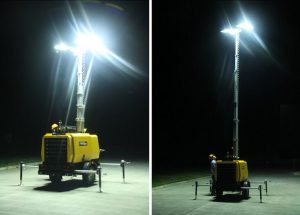Brief Introduction
Semiconductor light-emitting diodes (LEDs) have been widely used in indicator lights, signal lights, instrument displays, mobile phone backlights, automotive light sources and other occasions. White light LED technology has also continued to develop, and LEDs have become more and more widely used in the field of lighting. In the past, there were no comprehensive national standards and industry standards for LED testing. In production practice, only relative parameters could be used as the basis. Different manufacturers, users, and research institutions had a lot of controversy over this, which led to the development of the domestic LED industry. Big impact. Combined with the latest standards on LED test methods at home and abroad, based on the actual needs of various LED applications, this article introduces the electrical characteristics, optical characteristics, switching characteristics, color characteristics, thermal characteristics, and reliability.
Electrical Characteristics Test Method
LED is a unipolar PN junction diode composed of semiconductor inorganic materials, and the relationship between its voltage and current is called volt-ampere characteristics. The electrical characteristic parameters of the LED include forward current, forward voltage, reverse current and reverse voltage. The LED must be driven by a suitable current and voltage to work normally (as shown in Figure 1). Through the test of the electrical characteristics of the LED, the maximum allowable forward voltage, forward current, reverse voltage and current of the LED can be obtained, and the best working electric power of the LED can also be determined.
The electrical characteristics of LEDs are generally tested with a voltage and current meter under the corresponding constant current and constant voltage source.
Optical Characteristic Test
Similar to other light sources, the test of LED light characteristics mainly includes luminous flux, luminous efficiency, radiant flux, radiation efficiency, light intensity, light intensity distribution characteristics and spectral parameters.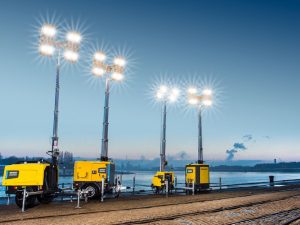
3.1 Luminous flux and light effect
There are two methods for testing luminous flux, namely the integrating sphere method and the variable angle photometer method. The variable-angle photometer method is the most accurate method to test the luminous flux, but because it takes a long time, the integrating sphere method is generally used to test the luminous flux. There are two test structures in the existing integrating sphere method to measure LED luminous flux. One is to place the tested LED on the center of the sphere, and the other is to place it on the sphere wall.
As the integrating sphere method is used to test the luminous flux, the self-absorption of light by the light source will affect the test results. Therefore, it is often necessary to introduce auxiliary lights.
After the luminous flux is measured, the luminous efficiency of the LED can be measured with an electrical parameter tester. The test method of radiant flux and radiant efficiency is similar to that of luminous flux and luminous efficiency.
3.2 Light intensity and light intensity distribution characteristics
The light intensity of the point light source is uniformly distributed in all directions in space, and the test results received by detectors with different receiving apertures at different distances will not change. However, because of the inconsistent light intensity distribution of the LED, the test results vary with the test distance and the detector aperture. Therefore, CIE-127 puts forward two recommended test conditions, so that each LED can be tested and evaluated under the same conditions. Currently, the recommended test conditions of CIE-127 have been quoted by various LED manufacturers and testing organizations.
3.3 Spectral parameters
The spectral characteristic parameters of LEDs mainly include peak emission wavelength, spectral radiation bandwidth and spectral power distribution. The spectrum of a monochromatic LED is a single peak, and its characteristics are expressed in terms of peak wavelength and bandwidth, while the spectrum of a white LED is composed of multiple monochromatic spectra. The spectral characteristics of all LEDs can be represented by the spectral power distribution. The spectral power distribution of white LEDs is shown. The chromaticity parameters can also be calculated from the spectral power distribution of the LED.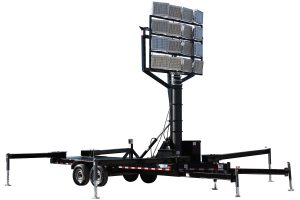
The measurement of the spectral power distribution needs to be carried out by light splitting, and each color light is distinguished from the mixed light for measurement. Generally, prisms and gratings can be used to achieve light splitting.
LED Switch Characteristic Test
LED switching characteristics refer to the light, electricity and color change characteristics of the LED at the moment of power-on and power-off. Through the test of the LED switch characteristics, the working state and material properties of the LED can be obtained at the moment of power-on and power-off. This can not only understand the loss of the LED on power-on and power-off, but also can be used to guide the design of LED drive modules.
Color Characteristics
The color characteristics of LEDs mainly include chromaticity coordinates, dominant wavelength, color purity, color temperature, and color rendering. The color characteristics of LEDs are particularly important for white light LEDs.
The existing color characteristic test methods include spectrophotometry and integral method. The spectrophotometric method is to measure the LED spectral power distribution by a monochromator, and then use the chromaticity weighting function to integrate to obtain the corresponding chromaticity parameters; the integral method is to directly measure the chromaticity parameters by using a specific color filter with a photodetector. The accuracy of the spectrophotometric method is much higher than that of the integral method.
Thermal Characteristics
The thermal characteristics of LED mainly refer to thermal resistance and junction temperature. Thermal resistance refers to the ratio of the temperature difference along the heat flow channel to the power dissipated on the channel, and the junction temperature refers to the PN junction temperature of the LED. The thermal resistance and junction temperature of the LED are important factors that affect the photoelectric performance of the LED.
There are generally two methods to test the junction temperature of the LED: one is to measure the surface temperature of the LED chip with an infrared temperature microscope or a micro thermocouple and regard it as the junction temperature of the LED, but the accuracy is not enough, the other is One is to determine the junction temperature of the LED using the inverse relationship between the forward bias voltage and the junction temperature under a certain current.
Reliability
The reliability of LEDs includes electrostatic sensitivity characteristics, lifetime, environmental characteristics, and so on. The electrostatic sensitivity characteristic refers to the electrostatic discharge voltage that the LED can withstand. Some LEDs have high resistivity and a short distance between positive and negative electrodes. When the electrostatic charge at both ends accumulates to a certain value, this electrostatic voltage will break down the PN junction, and in severe cases, the PN junction can be broken down and the LED will fail. Therefore, it is necessary to test the electrostatic sensitivity characteristics of the LED to obtain the critical voltage of the electrostatic discharge fault of the LED. At present, human body model, machine model, and device charging model are generally used to simulate the electrostatic discharge phenomenon in real life.
In order to observe the changing law of LED’s long-term continuous use of time performance, it is necessary to carry out sampling tests on the LED, and obtain the life parameters of the LED through long-term observation and statistics.
The test of the environmental characteristics of LEDs often adopts methods to simulate various natural invasions encountered by LEDs in application, generally including high and low temperature impact test, humidity cycle test, humidity test, salt spray test, sand dust test, irradiation test, vibration And impact test, drop test, centrifugal acceleration test, etc.
Summarizing the above test methods, the international standards for semiconductor light-emitting diode test methods have made corresponding provisions for LED electrical characteristics, optical characteristics, thermal characteristics, electrostatic characteristics and life tests.
For electrical characteristics testing, the standard specifies the test block diagrams for LED forward voltage, reverse voltage, and reverse current. For luminous flux testing, the standard specifies a 2π solid angle test structure. For light intensity testing, the standard quotes CIE-127 Recommended conditions. In addition, clear regulations have been made for spectrum testing, thermal property testing, electrostatic discharge sensitivity testing, and life testing.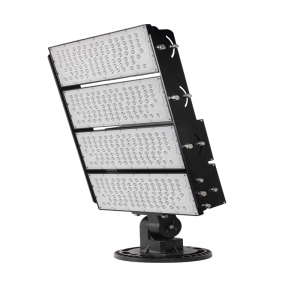
Conclusion
The formulation of international standards summarizes the existing LED test methods, and upgrades the scientifically applicable methods to standard test methods, which eliminates the differences in the field of LED testing from all walks of life, and makes the test results more truly reflect the world LED The overall level of the industry. However, in view of the continuous development of LED technology, the formulation of national standards is not done once and for all, and the latest and most appropriate test technology should be introduced into the standard at all times.
The Relationship between LED Color and Luminous Efficiency and Materials
The luminous color and luminous efficiency of LEDs are related to the materials and processes used to make LEDs. Currently, there are three types of red, green and blue widely used. Due to the low working voltage of the LED (only 1.5-3V), it can actively emit light with a certain brightness, and the brightness can be adjusted by voltage (or current), and it is resistant to shock, vibration and long life (100,000 hours). Different materials are used to make LEDs, which can generate photons with different energies, thereby controlling the wavelength of light emitted by the LED, that is, the spectrum or color.
The material used in the first LED in history is gallium arsenide, and its forward PN junction voltage drop (VF, which can be understood as lighting or working voltage) is 1.424V, and the emitted light is infrared spectrum. Another commonly used LED material is phosphorous (P) gallium (Ga), the forward PN junction voltage drop is 2.261V, and the light emitted is green.
Based on these two materials, the early LED industry used the GaAs1-xPx material structure to theoretically produce LEDs of any wavelength in the range from infrared light to green light. The subscript X represents the percentage of phosphorous element substituted for arsenic. Generally, the PN junction voltage drop can determine the wavelength and color of the LED. The typical ones are GaAs0.6P0.4 red LED, GaAs0.35P0.65 orange LED, GaAs0.14P0.86 yellow LED and so on. Because the three elements of gallium, arsenic, and phosphorus are used in manufacturing, these LEDs are commonly referred to as three-element light-emitting tubes.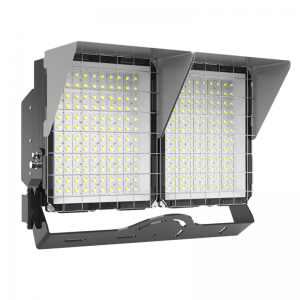
And GaN (gallium nitride) blue LED, GaP green LED and GaAs infrared LED are called two-element light emitting tubes. At present, the latest process is a four-element LED made of AlGaInN, a four-element material that mixes four elements of aluminum (Al), calcium (Ca), indium (In), and nitrogen (N), which can cover all visible light and part of ultraviolet light. The spectral range of light.
Luminous intensity: The measurement units of luminous intensity include illuminance unit (Lux), luminous flux unit (Lumen), luminous intensity unit (Candle power) 1CD (Candle light) refers to a completely radiant object, at the freezing point temperature of platinum, every six The luminous intensity of an area of one tenth of a square centimeter. (Previously it refers to a whale oil candle with a diameter of 2.2 cm and a quality of 75.5 grams, which burns 7.78 grams per hour, has a flame height of 4.5 cm, and the luminous intensity along the horizontal direction) 1L (lumens) refers to 1 CD candle light at a distance of 1 cm , The luminous flux on a plane with an area of 1 cm².



